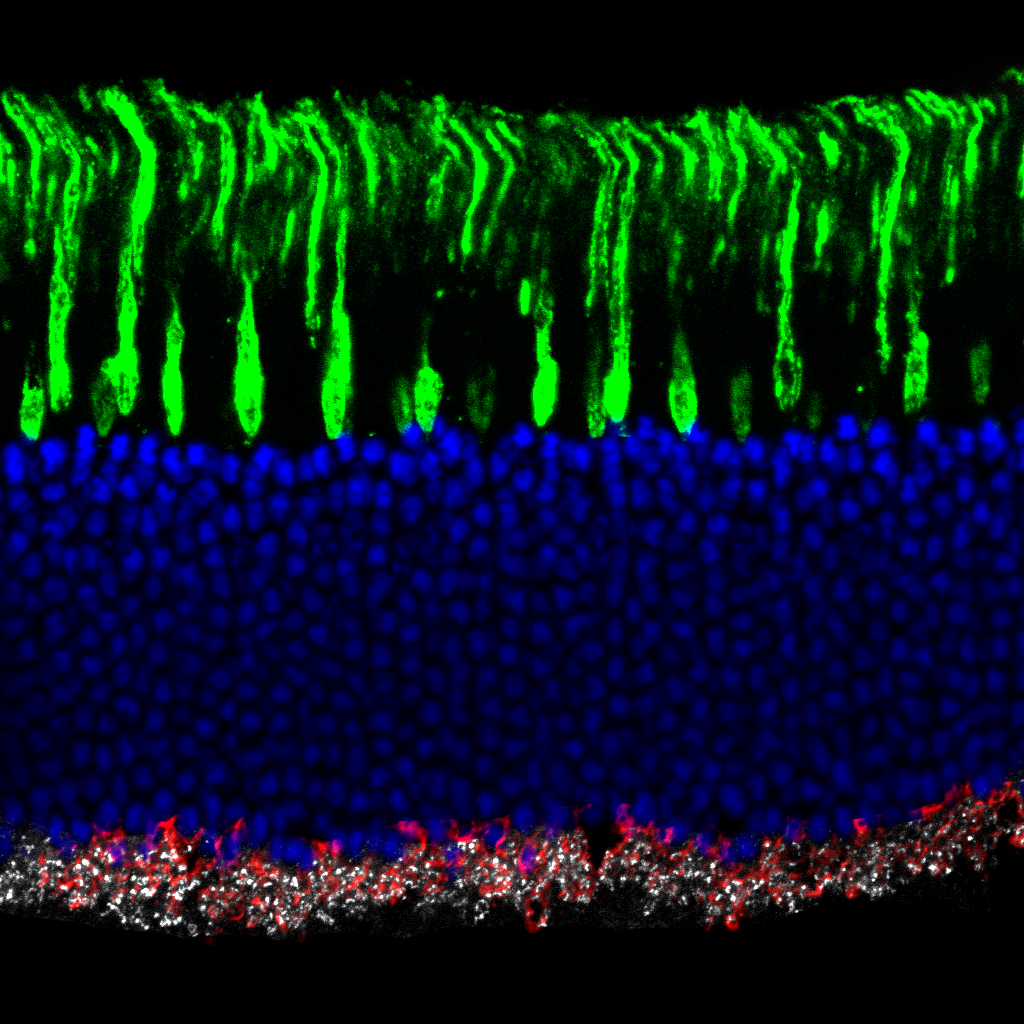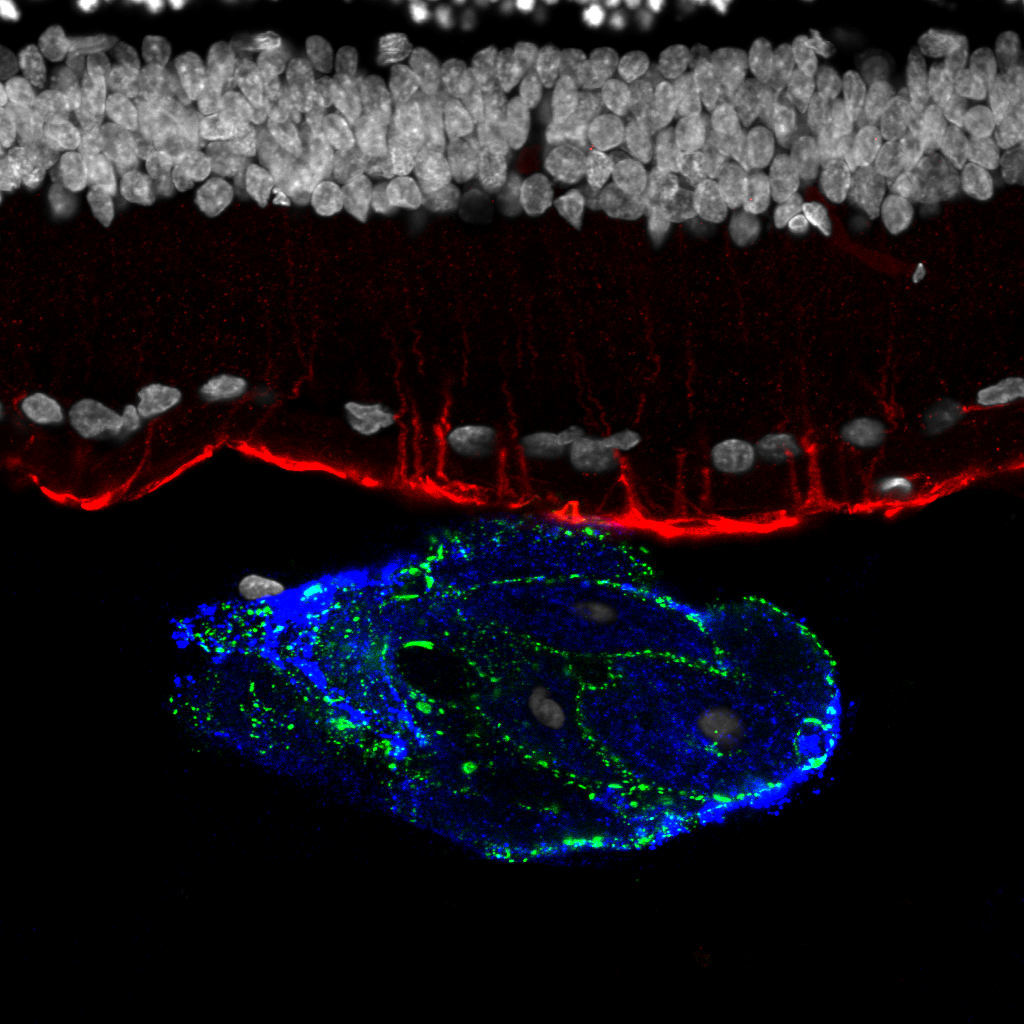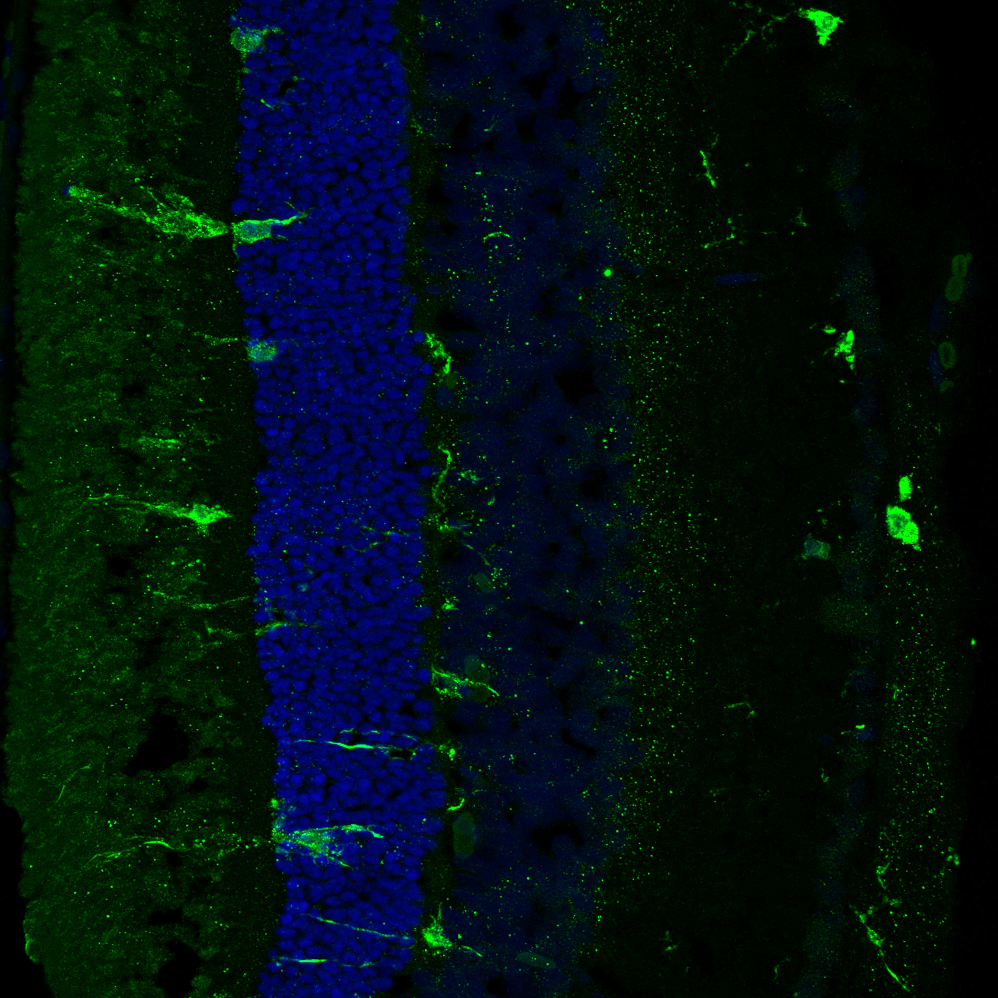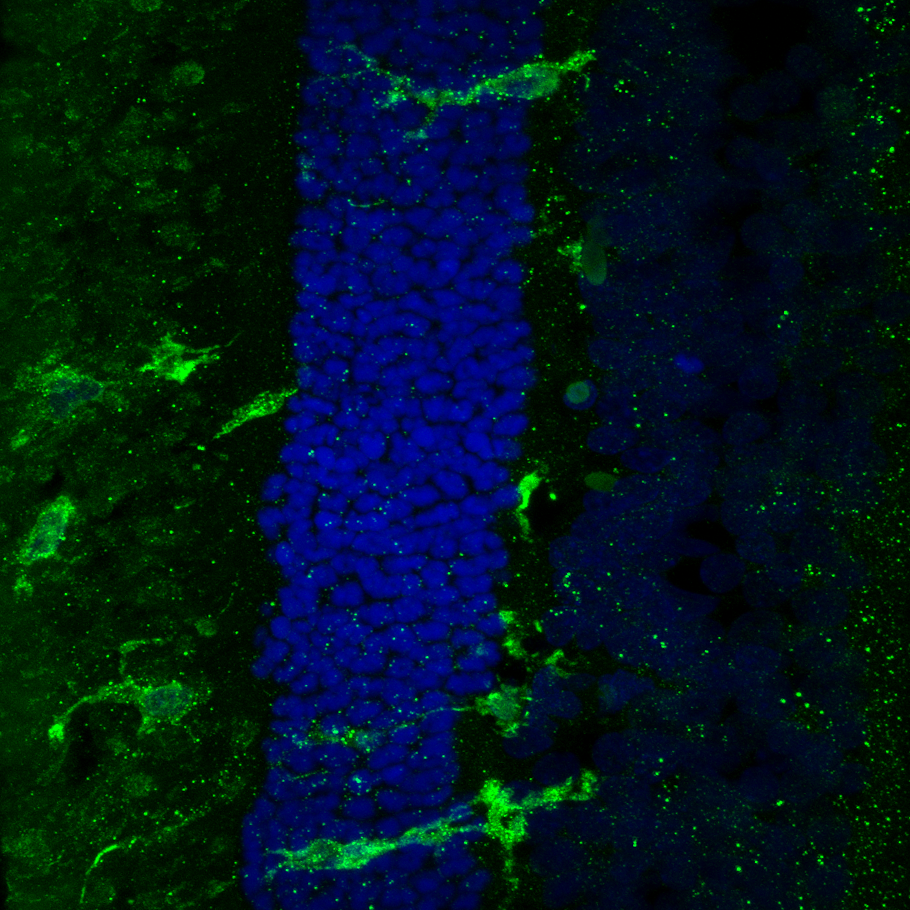The retina is the light-sensitive layer of the eye, responsible for initiating the cascade of events that ultimately leads to visual perception. Vision relies on two types of photoreceptors; rods, used in low-light conditions, and cones (green colored structures in the image above) used for high acuity vision as well as the detection of different wavelengths of radiation (color). Both are highly specialized cell types that posses the ability to convert photons of light into electrochemical signals that are relayed to the lateral geniculate nucleus and then onto higher centers in the visual cortex where humans experience visual perception. Under certain conditions (i.e., inherited genetics or physical trauma) photoreceptor degeneration can lead to a gradual decline in visual acuity, and in extreme cases blindness.

To treat certain types sight-threatening conditions, we have begun testing the efficacy of intraocular injections of stem cells (blue and green ovoid structure in the image below) as a means of ameliorating the effects of photoreceptor degeneration, thus preserving vision.

As part of this particular project, I investigated whether intraocular injections of stem cells elicited a response from the immune cells in the retina. Here, I used a laser scanning confocal microscope to capture many high-resolution images to generate a composite image the entire neural retina (image below).
 Composite image.
Composite image.
 Magnified 400 times.
Magnified 400 times.
 Magnified 600 times.
Magnified 600 times.
In these sample images the larger green ‘blobs’ reveal immune cells as they infiltrate the retina in response to neural degeneration. The blue color in these images shows the layer of photoreceptor nuclei. While much remains to be seen about whether these cell-based therapies have a positive impact on the preservation of vision, an increasing number of these therapeutic approaches are making their way into clinical trails.